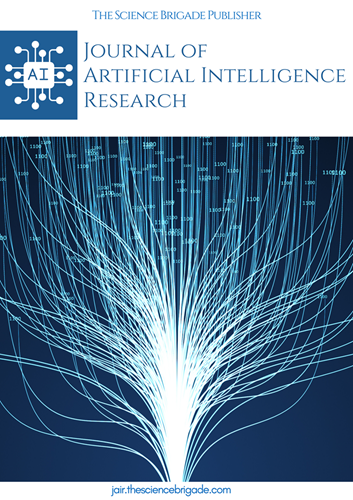Deep Learning in Human-Computer Interaction
Improving Gesture Recognition for Augmented Reality
Keywords:
Deep Learning, Human-Computer Interaction, Recurrent Neural Networks, Gaming, User Experience, Transformer ModelsAbstract
The integration of deep learning into human-computer interaction (HCI) has significantly enhanced the capabilities of gesture recognition systems, particularly in augmented reality (AR) applications. This paper explores the advancements in deep learning techniques and their effectiveness in recognizing and interpreting human gestures in real-time environments. By leveraging convolutional neural networks (CNNs) and recurrent neural networks (RNNs), researchers have developed robust models that can accurately detect gestures, improving user experience in gaming and other AR applications. This study discusses the underlying methodologies, the challenges faced, and the future directions for research in this rapidly evolving field. The findings highlight the potential of deep learning to revolutionize interaction paradigms, making technology more intuitive and accessible.
References
Gayam, Swaroop Reddy. "Deep Learning for Autonomous Driving: Techniques for Object Detection, Path Planning, and Safety Assurance in Self-Driving Cars." Journal of AI in Healthcare and Medicine 2.1 (2022): 170-200.
Venkata, Ashok Kumar Pamidi, et al. "Reinforcement Learning for Autonomous Systems: Practical Implementations in Robotics." Distributed Learning and Broad Applications in Scientific Research 4 (2018): 146-157.
Nimmagadda, Venkata Siva Prakash. "Artificial Intelligence for Real-Time Logistics and Transportation Optimization in Retail Supply Chains: Techniques, Models, and Applications." Journal of Machine Learning for Healthcare Decision Support 1.1 (2021): 88-126.
Putha, Sudharshan. "AI-Driven Predictive Analytics for Supply Chain Optimization in the Automotive Industry." Journal of Science & Technology 3.1 (2022): 39-80.
Sahu, Mohit Kumar. "Advanced AI Techniques for Optimizing Inventory Management and Demand Forecasting in Retail Supply Chains." Journal of Bioinformatics and Artificial Intelligence 1.1 (2021): 190-224.
Kasaraneni, Bhavani Prasad. "AI-Driven Solutions for Enhancing Customer Engagement in Auto Insurance: Techniques, Models, and Best Practices." Journal of Bioinformatics and Artificial Intelligence 1.1 (2021): 344-376.
Kondapaka, Krishna Kanth. "AI-Driven Inventory Optimization in Retail Supply Chains: Advanced Models, Techniques, and Real-World Applications." Journal of Bioinformatics and Artificial Intelligence 1.1 (2021): 377-409.
Kasaraneni, Ramana Kumar. "AI-Enhanced Supply Chain Collaboration Platforms for Retail: Improving Coordination and Reducing Costs." Journal of Bioinformatics and Artificial Intelligence 1.1 (2021): 410-450.
Pattyam, Sandeep Pushyamitra. "Artificial Intelligence for Healthcare Diagnostics: Techniques for Disease Prediction, Personalized Treatment, and Patient Monitoring." Journal of Bioinformatics and Artificial Intelligence 1.1 (2021): 309-343.
Thota, Shashi, et al. "Federated Learning: Privacy-Preserving Collaborative Machine Learning." Distributed Learning and Broad Applications in Scientific Research 5 (2019): 168-190.
F. Chollet, Deep Learning with Python, 2nd ed. Greenwich, CT: Manning Publications, 2021.
G. E. Hinton et al., "Deep neural networks for acoustic modeling in speech recognition: The shared views of four research groups," IEEE Signal Processing Magazine, vol. 29, no. 6, pp. 82-97, Nov. 2012.
R. Collobert and J. Weston, "A unified architecture for natural language processing: Deep neural networks with multitask learning," in Proceedings of the 25th International Conference on Machine Learning, 2008, pp. 160-167.
M. Abadi et al., "TensorFlow: A system for large-scale machine learning," in Proceedings of the 12th USENIX Symposium on Operating Systems Design and Implementation (OSDI 16), 2016, pp. 265-283.
Y. Zhang and Q. Yang, "A survey on multi-task learning," IEEE Transactions on Knowledge and Data Engineering, vol. 34, no. 12, pp. 5586-5609, Dec. 2022.
Y. Wang, Q. Chen, and W. Zhu, "Zero-shot learning: A comprehensive review," IEEE Transactions on Neural Networks and Learning Systems, vol. 30, no. 7, pp. 2172-2188, Jul. 2019.
D. Bahdanau, K. Cho, and Y. Bengio, "Neural machine translation by jointly learning to align and translate," in Proceedings of the 3rd International Conference on Learning Representations (ICLR), 2015.
M. I. Jordan and T. M. Mitchell, "Machine learning: Trends, perspectives, and prospects," Science, vol. 349, no. 6245, pp. 255-260, 2015.
J. Devlin, M. W. Chang, K. Lee, and K. Toutanova, "BERT: Pre-training of deep bidirectional transformers for language understanding," in Proceedings of the 2019 Conference of the North American Chapter of the Association for Computational Linguistics: Human Language Technologies, 2019, pp. 4171-4186.
A. Vaswani et al., "Attention is all you need," in Proceedings of the 31st International Conference on Neural Information Processing Systems (NeurIPS), 2017, pp. 5998-6008.
Downloads
Published
How to Cite
Issue
Section
License

This work is licensed under a Creative Commons Attribution-NonCommercial-ShareAlike 4.0 International License.
License Terms
Ownership and Licensing:
Authors of this research paper submitted to the journal owned and operated by The Science Brigade Group retain the copyright of their work while granting the journal certain rights. Authors maintain ownership of the copyright and have granted the journal a right of first publication. Simultaneously, authors agreed to license their research papers under the Creative Commons Attribution-NonCommercial-ShareAlike 4.0 International (CC BY-NC-SA 4.0) License.
License Permissions:
Under the CC BY-NC-SA 4.0 License, others are permitted to share and adapt the work, as long as proper attribution is given to the authors and acknowledgement is made of the initial publication in the Journal. This license allows for the broad dissemination and utilization of research papers.
Additional Distribution Arrangements:
Authors are free to enter into separate contractual arrangements for the non-exclusive distribution of the journal's published version of the work. This may include posting the work to institutional repositories, publishing it in journals or books, or other forms of dissemination. In such cases, authors are requested to acknowledge the initial publication of the work in this Journal.
Online Posting:
Authors are encouraged to share their work online, including in institutional repositories, disciplinary repositories, or on their personal websites. This permission applies both prior to and during the submission process to the Journal. Online sharing enhances the visibility and accessibility of the research papers.
Responsibility and Liability:
Authors are responsible for ensuring that their research papers do not infringe upon the copyright, privacy, or other rights of any third party. The Science Brigade Publishers disclaim any liability or responsibility for any copyright infringement or violation of third-party rights in the research papers.




